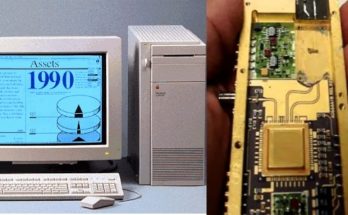The following was posted by a redditor named throwawaymymindddddd.
“I would like to put in my 2c since it seemed like it reached no one last time. I’m a research assistant in a prominent lab that utilities CRISPR/Cas9 in experiments and we have published many papers in a wide range of journals including Nature.
“Again I need to say that all this talk is fiction until we can solve the problems associated with gene editing and the technology as a whole. Expanding on my previous comment from another post, CRISPR/Cas9 as well as any other form of gene editing technique including Zinc fingers and recombinase tech would need a huge leap in development to be used clinically.
“To expand, the main problem is specificity. Current technology allows for whole genome sequencing, which you can check my comment history for context. In short, whole genome sequencing is expensive and since science funding has seemed to decline in recent years (See Spain and see how the scientists are struggling over there), it makes it very inefficient to screen possible gene edits within the whole genome. This, coupled with needing an extreme computer with high processing power to actually process the data is not feasible.
“In addition to the previous problem, another problem is time. How long it takes to produce one cell line with a “knocked out protein” (a knock out is a cell line that has a disruption in the DNA that prevents one or more proteins from being produced (For cell lines that have more than one protein knocked out, its usually done in succession)). It can be as fast as one and a half months, and it can also be as slow as 3-4 months or even never! Some genes are fickle like that and are impossible to disrupt.
“People talking about the possibility of editing a live human or a baby are completely out of their mind and are not educated on the topic. For reference, I would introduce CRISPR/Cas9 to approximately 50,000-125,000 individual cells. This number then gets cut down using various methods which include but are not limited to; applying an antibiotic that would kill the cell if it does not have the CRISPR/Cas9 within the cell and/or using Flow Cytometry such as a FACS sort. This cuts down the number into blocks of 96. This is due to the 96 wells present in a 96 well plate lol. ONE SINGULAR CELL is placed in each of the wells. And from this you can get a hit rate of about 10-30 cell lines (Cells that grew from one cell are called a cell line) that grow which takes about 2 to 3 weeks. Those that grow, you then screen for DNA disruption. You can do this via western blotting or sequencing the DNA (which would be a region of about 1000 bases from the available 3 BILLION BASES). Now if none of the cells that grew are positive for what you want, you start again. As you can imagine, going from 125,000 to 1 cell takes a lot of work just for one positive result. This is amplified for a multi-knockout cell line as you would have to do each step for each protein you want disrupted. And people still want to perform CRISPR/Cas9 experiments on humans even with a huge chance of it not working.
“As you can see I haven’t even talked about possibility of introducing another piece of DNA to do the proper “Editing” bit of gene editing. This is a whole different ball park and a whole different game that you play after achieving the previous step. This process is possible due to the repair system in the cell that “protects” the DNA from mutations. This process is also leads into cell arrest but that’s besides the point. So the two types are called Homology directed repair (HDR) and Non-homologous end joining (NHEJ). In conventional circumstances, NHEJ is the method used by the cell. It is also utter crap that doesn’t work 99% of the time LOL. This is good because NHEJ actually allows for the production of knock-outs since when we cut the DNA, it is this repair system that is used to repair that strand of DNA. HDR is utilised by scientists (I think? This is due to my lab utilising a different technology to “rescue” the cells back to health). This technique introduces a strand of DNA (which in gene editing would be the one that we construct and what we want it to be) and uses this strand of DNA to fix the DNA break that we introduced. This is much more effective than NHEJ. Think of NHEJ like a broken jigsaw puzzle and you’re slamming pieces together even if they don’t fit. NHEJ basically grabs whatever it can and hopes for the best.
“It is for these reasons that I believe that this would never happen in our life time commercially. I do think it has a lot of potential for clinical trials though, but only in due time and technological advances.”
… He also commented,
“So CRISPR/Cas9 itself was discovered long ago though it wasnt called CRISPR/Cas9 at the time. Recent for scientists is different from what others would consider recent. For context there are scientists out there still debating about ideas which have been established 20 years into the future!
“I think the overstatements of the dangers of specific scientific research is warranted. At the moment scientists are the only ones aware of the danger while lay people such as Bill Gates still advocate for things that are still fiction. I also think the representatives of the lay people are also an issue. The conclusion that I have come to is that for legislature to be argued between scientists and not between scientists and law makers. An analogy I’ve heard is: Who would you rather have as the captain of the ship you’re on; someone who has been voted captain by the crew, or someone who has been voted captain by the lay people? Obviously you would want the captain voted by the crew right? Someone who has experience in the seas and not one who has been chosen due to their position in power obviously. But with that being said, I do think there are some major flaws in this argument.
“It is true that we can talk about it before it becomes a thing, but I do sincerely believe it to be something past our lifetime unfortunately.
“I’m also very aware about maintaining transparency. The thing is though, I am someone that does not have a PhD, and to get to accumulate the knowledge I have, you would have to complete highschool, do a three year course for a bachelors, do post-graduate courses such as Masters/PhD or do an honours year for Australians and then work as an RA for a year. The knowledge accumulated by my professors or post-docs would be a literal mountain compared to mine. We need to dumb down the ideas as it is not feasible to explain each and every concept involved in a process. Imagine it like building a house. You can say we laid the foundation, we did the roofing, we did the plumbing, it sounds very wishy washy but we know that a house can take weeks or months to build. What I provided in previous comment is the basic structure of how you would go about doing an experiment like that but in reality it would take much more planing and technical work.
“I would actually love that, to have biochemists out in the real world and someone to represent them like how Bill Nye does with other sciences.. This however, is an issue due to the funding received by the professors causing them to be just work horses that pump out research papers. Do the other scientists such as Neil and Bill still do actual science?”


